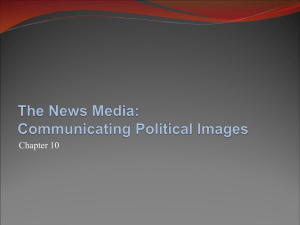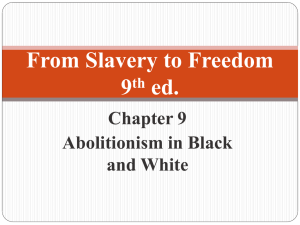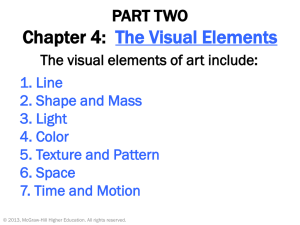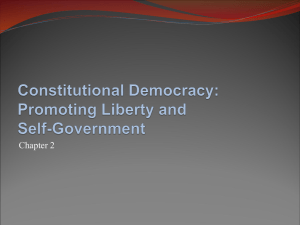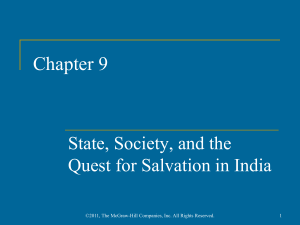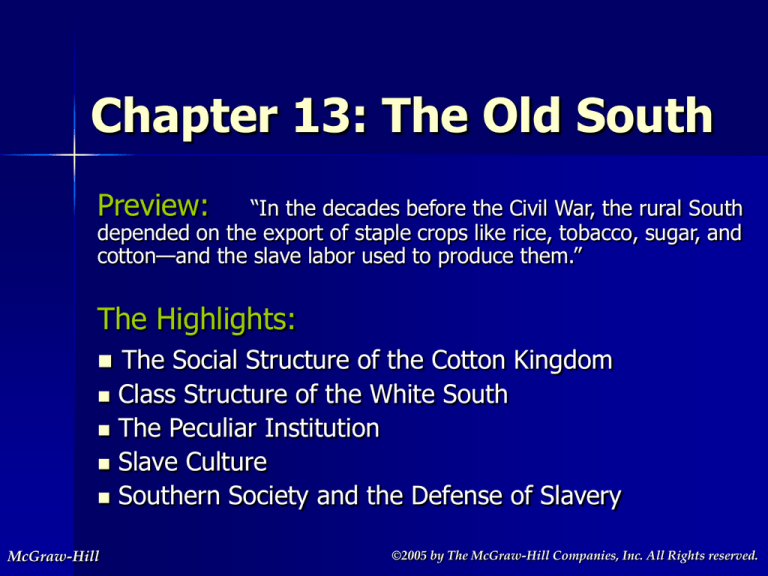
Chapter 13: The Old South
Preview:
“In the decades before the Civil War, the rural South
depended on the export of staple crops like rice, tobacco, sugar, and
cotton—and the slave labor used to produce them.”
The Highlights:
McGraw-Hill
The Social Structure of the Cotton Kingdom
Class Structure of the White South
The Peculiar Institution
Slave Culture
Southern Society and the Defense of Slavery
©2005 by The McGraw-Hill Companies, Inc. All Rights reserved.
The Social Structure of
the Cotton Kingdom
13-2
The Boom Country Economy
– Cotton pushes westward, 1810s-1850s
– Southern prosperity
– Single-crop agriculture exhausted the soil
The Upper South’s New Orientation
– Interstate slave trade
– Upper South to Lower South
McGraw-Hill
©2005 by The McGraw-Hill Companies, Inc. All Rights reserved.
13-3
McGraw-Hill
©2005 by The McGraw-Hill Companies, Inc. All Rights reserved.
13-4
The Rural South
– Lack of manufacturing
– Absence of cities: only 1 out of 10 people
lived in urban areas
Distribution of Slavery
– Centered in the Deep South
– Most slaves worked in agriculture
Slavery as a Labor System
– A profitable institution for slaveowners
– Fed the aristocratic values of planters
McGraw-Hill
©2005 by The McGraw-Hill Companies, Inc. All Rights reserved.
13-5
McGraw-Hill
©2005 by The McGraw-Hill Companies, Inc. All Rights reserved.
Class Structure of the
White South
13-6
The Slaveowners
– 25% of 8 million whites owned slaves (1860)
– Typical plantation: 25-50 slaves
Tidewater and Frontier
– Tidewater: Eastern Seaboard, where slavery
was more established
– Frontier: the interior, where slavery was
newer
McGraw-Hill
©2005 by The McGraw-Hill Companies, Inc. All Rights reserved.
13-7
The Master at Home
– Paternalism: belief in caring for slaves as
one’s children
– Everyone on plantation was the master’s
dependent
The Plantation Mistress
– Domestic duties
– Some women identified with slaves
– The social problem of miscegenation
McGraw-Hill
©2005 by The McGraw-Hill Companies, Inc. All Rights reserved.
13-8
McGraw-Hill
©2005 by The McGraw-Hill Companies, Inc. All Rights reserved.
13-9
Yeoman Farmers
– Half of southern white population
– 80% were landowners
– Limited economic opportunity
– Surprising absence of class conflict with
planters
Poor whites
– 5% of white population
– Most illiterate and malnourished
– Hated African Americans more than
planters
McGraw-Hill
©2005 by The McGraw-Hill Companies, Inc. All Rights reserved.
13-10
The Peculiar Institution
Work and Discipline
– Hierarchy of slave workers: house servants,
drivers, artisans, field hands
– Long work days – 15 hours per day
– Usually had Sundays off
Slave Maintenance
– Planters provided basic clothing & shelter
– Life expectancy 8 years shorter than whites
McGraw-Hill
©2005 by The McGraw-Hill Companies, Inc. All Rights reserved.
“Slaves learned to outwit their masters by wearing an
‘impenetrable mask’ around whites, one bondsman recalled. ‘How
much of joy, of sorrow, of misery and anguish have they hidden
from their tormentors’”(410).
13-11
Resistance
– Many slave revolts in Latin America
– Gabriel Prosser (1800)
– Denmark Vesey (1822)
– Nat Turner (1831)
– Day-to-day resistance was more common
– Hidden emotions
McGraw-Hill
©2005 by The McGraw-Hill Companies, Inc. All Rights reserved.
13-12
Slave Culture
The Slave Family
– Nearly half of couples faced breakup from
being sold in interstate slave trade
– Family ties, both nuclear and extended,
remained strong
– Clear gender roles
McGraw-Hill
©2005 by The McGraw-Hill Companies, Inc. All Rights reserved.
13-13
Slave Songs and Stories
– Work songs in the field and in the quarter
– Folktales continued African traditions
Steal Away to Jesus
– Slaves formed their own form of
Christianity
– Slave preachers
– Prevalence of spirituals
McGraw-Hill
©2005 by The McGraw-Hill Companies, Inc. All Rights reserved.
13-14
The Slave Community
– Defined hierarchy in slave quarters
– Importance of skin color
Free Black Southerners
– 260,000 of 4 million black Southerners
were free
– 85% lived in the Upper South
– Tried to develop close connections with
influential whites
McGraw-Hill
©2005 by The McGraw-Hill Companies, Inc. All Rights reserved.
Southern Society and the
Defense of Slavery
13-15
The Virginia Debate of 1832
– William Lloyd Garrison’s The Liberator
– Nat Turner’s insurrection
– Legislature argued bitterly over ending
slavery
– Voted 73-58 to refuse consideration of
legislation banning slavery
McGraw-Hill
©2005 by The McGraw-Hill Companies, Inc. All Rights reserved.
The Proslavery Argument
13-16
– Religious justification: slaves were the
descendants of Canaan
– Social and racial justification: Africans
were inferior
– James Henry Hammond—famous
proslavery writer
Closing Ranks
– Jacksonian Democrats defended slavery
Sections and the Nation
– North and South still unified in spite of
social and economic differences
McGraw-Hill
©2005 by The McGraw-Hill Companies, Inc. All Rights reserved.


